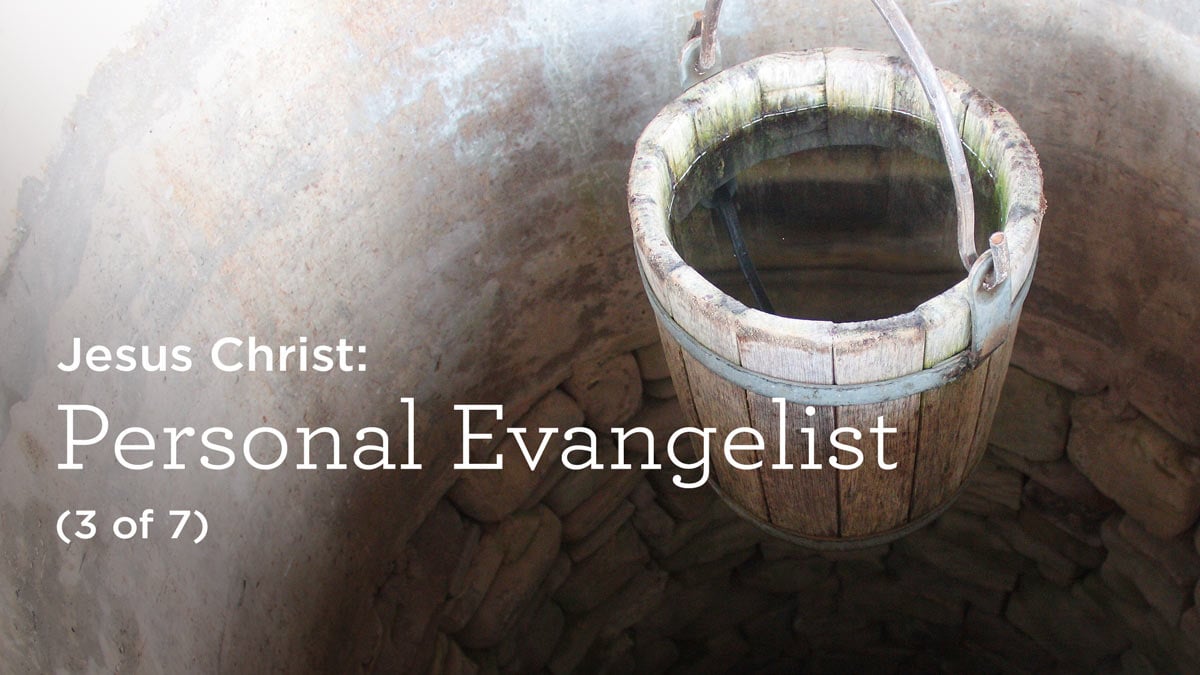
When we look at the life of Jesus, we may wonder at the great variety of ways in which He interacted with others. He conversed with them. He broke bread with them. He confronted them. He healed them. He even attended parties with them. In fact, it is a testament to Jesus’ very humanity that His comings and goings among everyday people seem, in both their breadth and their depth, to so closely resemble our own.
If we read the Gospels carefully, however, we will see that this variety of interaction is unified by a common theme: from the very beginning of His ministry, Jesus was preoccupied with spreading the Gospel and seeing unbelieving individuals become His followers.
The Woman at the Well
One episode from the Gospel of John clearly illustrates this commitment of Jesus to the task of personal evangelism: that of the Samaritan woman at the well, found in John 4.
The story is a familiar one to many of us: While journeying through Samaria, Jesus, tired from the road, stops at a well. A Samaritan woman approaches to draw from the well, and Jesus engages her in a conversation. He asks her for a drink, but soon shifts the topic to the spiritual “living water” (v. 10) that leads to “eternal life” (v. 14). By the end of the dialogue that follows, the woman has had her sins uncovered and proclaimed her hope in the coming Messiah—only to have Jesus reveal, “I who speak to you am he” (v. 26).
From the very beginning of His ministry, Jesus was preoccupied with spreading the Gospel and seeing unbelieving individuals become His followers.
John does not tell us the woman’s immediate response; we only know that when the disciples returned, they “marveled that he was talking with a woman” (v. 27). But her subsequent actions make it clear that the encounter had left her transformed: she “left her water jar and went away into town and said to the people, ‘Come, see a man who told me all that I ever did. Can this be the Christ?’” (vv. 28–29).
Lessons for Evangelism
Several elements from this encounter will prove useful to us in our own efforts to share the Gospel with our friends, family, and neighbors:
-
Jesus’ evangelism is personal. The eighteenth-century clergyman John Newton once observed, “To convert one sinner from the error of his way, is an event of greater importance, than the deliverance of a whole kingdom from temporal evil.”[1] This, we can safely assume, is the reason why Jesus so often went to individuals, sometimes even going out of His way to encounter them: because He was dedicated to their personal, individual salvation. It is the fulcrum upon which all of His encounters with people throughout the Gospels rests, memorably summed up just a chapter earlier, when Jesus had declared, “God so loved the world, that he gave his only Son, that whoever believes in him should not perish but have eternal life. For God did not send his Son into the world to condemn the world, but in order that the world might be saved through him” (John 3:16–17).
-
Jesus’ evangelism is about conversion. Many churches today are engrossed in teaching, small groups, discipleships, the establishing of healthy families, and all the internal facets of Christian living—all with little to no focus on seeing unbelieving people becoming Jesus’ committed followers Jesus. For Jesus, though, conversion was the priority. Jesus demonstrated that the Gospel is about neither the benefits that attach to people if they accept Christ nor the tragedies that await them if they reject Him. Instead, it is simply telling others who Jesus is, why He came, what He did, why it matters, and that He is, as the Samaritans came to realize, the self-proclaimed “Savior of the world” (v. 42).
-
Jesus’ evangelism produces evangelists. After her encounter with Jesus, the Samaritan woman immediately returned home to tell others, “Come, see a man.” The result? John tells us: “Many Samaritans from that town believed in him because of the woman’s testimony” (v. 39). Jesus seeks to use us in much the same way as in the everyday, run-of-the-mill events of life we live out the Gospel, causing people to ask the reason for the hope that we have. Our answer must be clear: “Come, see a man. Come meet Jesus.”
Fields White for Harvest
While the Samaritan woman returned home, Jesus continued to teach His disciples about evangelism, comparing the lost to sheaves of unharvested wheat:
Look, I tell you, lift up your eyes, and see that the fields are white for harvest. Already the one who reaps is receiving wages and gathering fruit for eternal life, so that sower and reaper may rejoice together. For here the saying holds true, “One sows and another reaps.” I sent you to reap that for which you did not labor. Others have labored, and you have entered into their labor. (vv. 35–38)
As younger ministers launch into their responsibilities to God’s people, one of the greatest concerns we might have for them is not that they will fail entirely but that they will succeed at the wrong things. Believers have a vitally important message for the world: Jesus is the only Savior, because Jesus is the only one qualified to save.
The fields are white for harvest. Have you entered into the labor?

- ^ “Messiah Suffering and Wounded for Us,” in Works of the Rev. John Newton (New York: Williams and Whiting, 1810), 4:228.
Other articles in this series:
Topics: Articles